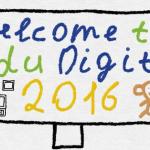Educational Blog as a Text-book
Primary tabs
Author:
I am in charge of the nomination “Educational Blog as a Text-Book” of the Review “Public Educational Digitech 2016” organized by the order of the Ministry of ES of RA. When, as a person in charge, I tried to formulate the requirements for the materials to be presented on this nomination, I realized the advantages and features of blogs as text-books more distinctly.
Now I will try to give my observations from the point of views of teachers and learners.
I am a teacher of Armenian, and my blog is a flexible tool for me. At any moment it gives me an opportunity to use different ways of teaching-learning activities: reading, grammar, watching a video film, reading classmates’ work, online discussion. The educational blog gives an opportunity to carry out an individual, differentiated approach in the teaching-learning process. The teacher has a clear understanding of how to develop a project, which task can be considered a priority for a class, for each learner. Blogs give an opportunity to have a packet of differentiated tasks or text adaptations on the same theme for the learner to choose according to his/her academic capabilities and needs. An ordinary hard copy text-book can’ give such an opportunity as the author of the book doesn’t know concrete students; sometimes he/she doesn’t even know for whom it is intended. The hard copy text-book is “static”. Whereas, the packet of tasks in the blog can continually be refreshed, changed and revised.
I can state from my own experience that even if I refer to the same author, and even if I work at the same pieces of creations with the learners of the same age, the packet of tasks will definitely be altered and revised because there come new learners with new needs. I myself change, learn about new information and resources, and the learners’ as well as my media skills change and develop.
Besides being flexible educational blogs can also be coordinative. Even if the teacher doesn’t create any blog page or category, a blog itself collects published materials according to months and years, according to frequency of views and chronology of publishing.
One of blog advantages is to give the learner an opportunity to choose among different pieces of creations by the same author. In an ordinary text-book one or two poems by a poet or stories by a writer are usually published. The learner has to read and learn what is published in the text-book, does some tasks and puts the given author aside. The teachers’ blog opens a wide range of creations by the given writer, and the learner can choose. For example, if the author is Tumanyan, the learner can open the packet and find tales, poems, stories, articles, private letters and links to some more resources. The learner can choose, read, analyze, make comparisons and express his/her opinion in his/her blog.
The teacher’s blog is also convenient for the learner when it is impossible for the learner to be physically present at the lesson: he/she knows the teacher’s blog address, and he/she can open it wherever he/she is, work at it and write his/her opinion or the answer to a question in the section of comments.
If the learner wants to improve his/her term or yearly mark for the course, he/she can open the tasks which he/she hasn’t fulfilled and begin doing it.
The teacher’s blog is also interesting for the learner’s parents, the school headmaster and other beneficiaries. Blog gives information about the school curriculum, subject syllabus, teaching-learning activities, educational projects and their results and also gives additional learning material.
Each school subject has its own peculiarity which dictates the structure of the blog, but after having discussed the matter with our colleagues we stated some points which should be common for any blog-text-book.
· The school subject for which the blog is working as a blog-text-book and the subject syllabus should be published in the blog.
· The themes and their tasks are to be in one packet (title, date, tag and so on)
· The themes should have teaching materials (with links) which will give the learner an opportunity to choose a teaching material.
· Some themes or the blog itself should have packets of further education (homework, self-education, specialized instruction).
· Blogs should have the list of long term projects and also their results.
· Blogs should be easy to navigate: any theme is to be easily found at any moment.

